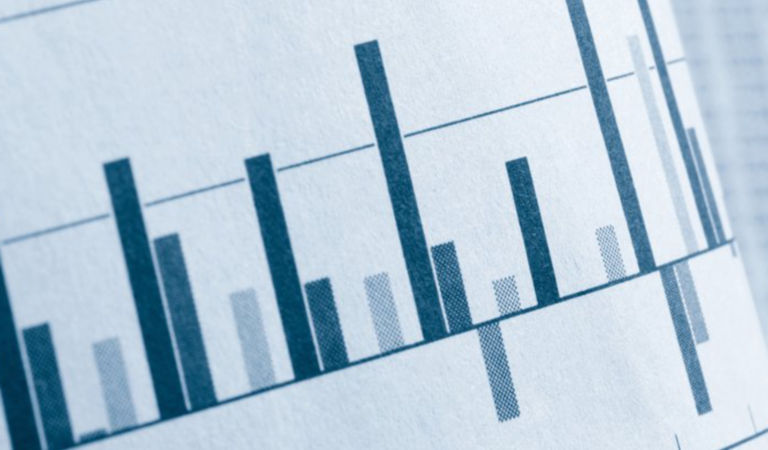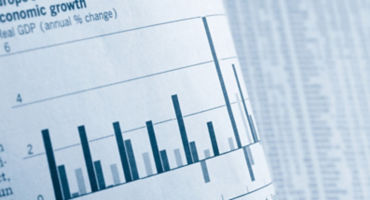Equities
Global equities (-2.0%) declined in August, ending the month with a 15.6% gain year to date. Market sentiment was dented by weakening economic data in China, increasing energy prices, and rising bond yields despite receding fears of an imminent recession and resilient labor markets. Inflation continued to trend lower across most global markets but remained uncomfortably high, with investors anticipating that the US Federal Reserve (Fed) will keep interest rates elevated for longer. Macroeconomic data indicated that the US economy is growing at a solid pace even as growth slowed in other key regions, notably Europe and China. Foreign investors sold a record amount of Chinese stocks as China’s economy faltered, and a debt crisis at one of China’s largest property developers destabilized financial markets and sparked fears about lasting damage to China’s credit conditions and economy. European natural gas prices skyrocketed as investors were concerned by a potential disruption in global liquefied natural gas (LNG) supplies from Australia due to reports of a planned strike at an important LNG plant.
US
US equities (-1.6%) snapped a five-month stretch of gains as stocks were weighed down by rising government bond yields and bank credit-rating downgrades. An improved outlook for US economic growth bolstered views that the Fed would keep interest rates higher for longer than previously expected. Markets dialed back the probability of recession as moderating inflation, a solid job market, and resilient consumer spending increased the potential that the US economy could achieve a “soft landing.” Inflation continued to cool, firming market expectations that the Fed would hold interest rates steady in September. The Fed’s preferred gauge of consumer prices — the Personal Consumption Expenditures Index — rose at a monthly pace of 0.2% in July and 3.3% annually, outpacing the Fed’s 2% target but in line with expectations. However, Fed Chair Jerome Powell warned that inflation remains too high and that further evidence of persistently above-trend economic growth could warrant further tightening of monetary policy to ensure that inflation is sustainably closer to the Fed’s target. Of the 99% of companies in the S&P 500 Index that had reported first-quarter earnings, the blended year-over-year earnings decline for the index was 4.1%, significantly better than estimates of a 7.0% decline. The forward 12-month price-to-earnings ratio stood at 18.8.
Economic data released during the month revealed that the US economy is weathering high interest rates. Healthy job and income growth underpinned the sustained momentum in the labor market. In July, headline nonfarm payrolls increased by 187,000 and average hourly earnings growth held steady at a 4.4% annual pace. Jobless claims at the end of August were largely unchanged from July, although the unemployment rate rose to 3.8% and job openings declined more than expected, signaling a gradual softening in the labor market. Robust spending data contributed to the economy’s resilience but also challenged the Fed’s efforts to curtail inflation. Aided by a strong job market and rising wages, retail sales and household spending in July surprisingly surged at the fastest pace since the beginning of the year, increasing 0.7% and 0.8%, respectively, from June. However, dwindling excess savings, the resumption of student loan repayments, and rapidly rising debt-servicing costs could pose headwinds to spending in the months ahead. Furthermore, the Conference Board’s Consumer Confidence Index slid to 106.1 in August, from 114 in July — the largest decline in two years — as weaker views on the labor market, higher borrowing costs, and lingering concerns about inflation curtailed consumer optimism. Housing market data was mixed; new-home sales and construction benefited from a very limited housing inventory, while existing-home sales were hurt by a combination of low supply and the highest mortgage rates in more than two decades.
The Institute of Supply Management (ISM) Manufacturing Index rose above expectations to a six-month high of 47.6 in August, from 46.4 in July, a hopeful sign that the manufacturing sector’s contraction has stabilized. In contrast, the services sector continued to expand at a moderate pace in July, as the ISM Services Index decreased by 1.2 points, to 52.7, amid lackluster employment growth. Growth in business activity and new orders slowed modestly, but overall services demand remained healthy. The National Federation of Independent Businesses (NFIB) Small Business Optimism Index rose to an eight-month high of 91.9, with a greater share of companies anticipating better business conditions over the next six months.
Ten of the 11 sectors in the S&P 500 Index (-1.6%) posted negative results. Energy (+0.8%) was the best-performing sector. Communication services (-0.4%) outperformed, driven by media (+3.0%). Health care (-0.7%) also outperformed, driven by pharmaceuticals (+4.7%) and biotechnology (+2.0%). Utilities (-6.2%) was the worst-performing sector, followed by consumer staples (-3.6%). Financials (-2.6%) also underperformed, driven lower by banks (-8.9%) and capital markets (-3.8%).
Europe
European equities (-2.2%) declined. Persistent weakness in macroeconomic indicators pointed to a darkening economic outlook for the region, underscoring the market’s bearish views on European stocks despite their attractive valuations relative to US equities. Money supply in the eurozone shrank in July for the first time since 2010 as private sector lending growth slowed further and short-term deposits declined, demonstrating that the European Central Bank’s (ECB’s) tighter monetary policy is curbing credit creation and growth. Tightening financial conditions could further constrain economic activity and cool inflationary pressures, and downside risks to economic growth gained greater prominence among policymakers, increasing expectations that the ECB would pause its rate-hiking cycle in September. The central banks of the UK and Norway raised interest rates by 25 basis points (bps) to battle sticky inflation. Preliminary estimates showed that eurozone headline inflation remained unchanged at 5.3% in August amid rising energy prices and the removal of electricity and gas subsidies in countries like France, while core inflation fell to 5.3%, from 5.5% in July. Second-quarter earnings for companies in the STOXX 600 Index are forecast to decline by 5.0%, better than prior estimates.
Europe’s manufacturing sector contracted for the fourteenth straight month; the HCOB Eurozone Manufacturing Purchasing Managers’ Index (PMI) registered 43.5 in August, up slightly from 42.7 in July. Production lines were considerably stressed as new orders continued to plummet at one of the fastest rates on record, and backlogs of work rapidly depleted. The four largest eurozone economies (Germany, France, Italy, and Spain) all remained in contractionary territory. Employment fell at a modest pace for the third successive month, while output prices deflated further, helped by improving supply chains. The Flash Eurozone Composite PMI in August showed that the services sector contracted for the first time this year, with rising borrowing costs weighing on consumer spending. Input costs fell sharply, and output prices dropped for a fourth successive month as the prices of raw materials were discounted. The European Commission’s Economic Sentiment Indicator continued to weaken in August, sliding to 93.3. Consumer confidence declined for the first time since September 2022 due to the prevailing pessimistic economic outlook, and business manager confidence slipped for the seventh straight month.
Germany’s (-3.3%) economy has stagnated for three consecutive quarters due to a downturn in its vast manufacturing sector, with weak global trade curtailing the country’s traditional strength in exports. The Ifo Business Climate Index in August indicated that German business morale deteriorated more than expected, while the ZEW Indicator of Economic Sentiment increased more than anticipated but remained firmly in negative territory. In the UK (-2.5%), economic activity declined more than forecast in August according to the S&P Global/CIPS Composite PMI, which contracted for the first time since January, dropping to 47.9, from 50.8 in July. Headline inflation eased to 6.8% in July, from 7.9% in June, while core inflation remained unchanged at 6.9%, suggesting further tightening by the Bank of England (BOE). In Spain (-1.4%), conservative People’s Party leader Alberto Núñez Feijóo was nominated by King Felipe VI to form a government.
Pacific Basin
Pacific Basin equities (-1.0%) ended lower. In Australia (-0.4%), the Reserve Bank of Australia (RBA) kept its key interest rate at 4.1% for a second straight meeting following cooling inflation and weaker household spending. Annual headline inflation declined to a 17-month low of 4.9% in July, from 5.4%, while core inflation dropped to 5.6%, from 6.0%, providing markets with greater confidence that the tightening cycle is largely complete. The unemployment rate surprisingly climbed to 3.7%, from 3.5%, as the economy unexpectedly shed 14,600 jobs, underscoring the RBA’s prediction that the labor market was near a turning point. July retail sales rebounded above estimates, rising 0.5% from a month earlier, but a decline in the annual rate signaled moderating sales growth. Treasurer Jim Chalmers warned that Australia’s economic growth will be substantially weaker due to higher interest rates and a slowdown in China — the country’s largest trading partner.
In Japan (0.0%), the Bank of Japan (BOJ) initiated security bond-buying operations in early August to slow gains in benchmark sovereign bond yields, aiming to curtail sharp moves in yields. Japan’s economy expanded at a much faster pace than predicted, as a surge in exports more than offset weaker-than-expected results for both business investment and private consumption. GDP grew at an annualized pace of 6.0% in the second quarter, marking the strongest economic growth since the fourth quarter of 2020 and well above the 2.7% rate in the first quarter. The impressive result significantly beat forecasts of 3.1%. Unemployment in July rose for the first time in four months, lifting to 2.7% from a month prior, while economists had expected 2.5%. Annual core inflation in Tokyo (excluding volatile fresh food but including fuel) slowed to 2.8% in August compared to a year earlier, marking the first sub-3% reading for almost a year, supporting the BOJ’s views that price growth will cool and monetary easing still needs to be maintained. However, a narrower measure of core inflation, which excludes fresh food and fuel, held firm at 4.0%, highlighting the risk that inflation could remain stubbornly high.
Hong Kong (-8.1%) government officials lowered their outlook for economic growth amid a waning post-pandemic recovery and economic weakness in China and the rest of the world. GDP is now expected to expand 4% – 5% in 2023, compared with the previous prediction of 3.5% – 5.5%. The Hong Kong dollar suffered its biggest monthly decline since 1985, falling 0.6% in August, as a pessimistic economic growth outlook and lower liquidity weighed on the currency. Japan’s contentious plan to start releasing treated wastewater from the wrecked Fukushima nuclear plant prompted the city (and China) to impose import bans on Japanese seafood and seaweed.
Singapore’s (-7.1%) Ministry of Trade and Industry lowered its 2023 fiscal-year GDP growth forecast to 0.5% – 1.5%, from 0.5% – 2.5%, due to a lackluster global economy, weak demand from key trading partners like China, and a protracted global electronics downturn. Second-quarter GDP growth was also revised down to 0.5% year over year, from 0.7%. New Zealand’s (-5.2%) central bank left interest rates unchanged but pushed out its timeline for rate cuts to 2025, signaling that current policy may not be sufficiently restraining economic activity.
Emerging Markets
Emerging markets (EM) equities (-4.7%) fell, with all EM regions ending in negative territory. Asia led the decline, followed by Latin America and Europe, the Middle East, and Africa (EMEA). Brazil, Russia, India, China, and South Africa met in Johannesburg for the fifteenth BRICS summit, where leaders introduced an ambitious push to expand their global influence by inviting top oil exporter Saudi Arabia, along with Iran, Egypt, Argentina, Ethiopia, and the United Arab Emirates, to join the bloc.
Asian equities (-4.8%) were dragged lower by China (-8.3%). Analysts cut China’s economic growth forecasts, and foreign investors sold a record US$12 billion of stocks as the economy faltered and the outlook for the property sector worsened. The government unveiled additional policy measures with more expected to come, yet it is unclear whether more aggressive stimulus measures will be rolled out due to concerns about debt and financial risks. The People’s Bank of China kept its five-year loan prime rate (LPR) unchanged at 4.2%, while trimming its one-year LPR by 10 bps, from 3.55% to 3.45%. Property developer Country Garden struggled to meet its debt obligations, and the share price of heavily indebted developer Evergrande plunged by nearly 90% after trading resumed in Hong Kong following a 17-month ban. South Korea’s (-4.2%) economic recovery stumbled under the weight of contracting exports and high household debt. President Yoon Suk Yeol navigated a delicate geopolitical situation following improved relations with Japan, as both nations sought separate trilateral agreements with the US and China. India’s (-1.2%) economy grew at the fastest pace in a year, with GDP accelerating by 7.8% annually in the second quarter amid strong services activity and robust demand.
EMEA equities (-3.5%) moved lower. Saudi Arabia’s state-run oil company Aramco expanded relations with key customers after granting full contractual supply for customers in China, South Korea, and Taiwan. The country may also extend its one million barrels per day of oil supply cuts into October, driving prices higher. South Africa (-6.6%), Poland (-6.4%), and Hungary (+5.6%) faced weaker currencies as developed market central banks kept a hawkish tone.
Latin America (-4.6%) fell sharply. In Brazil (+3.1%), the central bank lowered interest rates by 50 bps, to 13.25%, signaling more rate cuts to come, while Congress passed new fiscal rules aimed to shore up public finances and alleviate investors’ concerns about the government’s spending plans. Colombia (-11.1%), Chile (-7.5%), and Peru (-7.0%) suffered steep declines. In Colombia, the peso dropped to a year-to-date low following a 100 bps cut in interest rates, to 10.25% in July. In the second quarter, Colombia’s GDP growth receded to 0.3% year over year — the second straight quarterly decline and the worst since the fourth quarter of 2020 — with the decline in private investment accelerating to 13.8% in the quarter (24% compared to a year earlier). Peru’s central bank left interest rates at 7.75% as annual inflation of 5.88% remained well above the central bank’s 1% – 3% target. GDP contracted for the second consecutive quarter, falling 0.56% in the second quarter amid large-scale protests due to political turmoil.
Fixed Income
Most fixed income sectors posted negative total and excess returns as sovereign yields rose and credit spreads widened. Inflation data was mixed across developed markets but remained at levels still above central bank targets, while economic growth concerns lingered.
US economic data releases varied. Consumer confidence dropped on growing concerns about higher food and gasoline prices, while the trade balance narrowed as weaker consumer demand dragged down imports. The NFIB Small Business Optimism Index rose, and retail sales increased more than anticipated. The labor market showed signs of cooling, with the unemployment rate reaching the highest level in 18 months. The manufacturing PMI fell below estimates on weaker factory output. A steep decline in aircraft and equipment demand weighed down durable goods orders, but excluding transportation, orders improved modestly. Housing starts and building permits both rose as single and multifamily housing projects bolstered construction spending amid low inventories. New-home sales advanced, while existing-home sales declined as buyers navigated limited supply and high mortgage rates. The eurozone manufacturing PMI rose more than expected but remained in contractionary territory, while year-over-year core CPI was in line with estimates. Germany’s business sentiment fell as lower confidence in most sectors hampered the outlook. The UK’s manufacturing PMI contracted amid slower growth and a higher-interest-rate environment, while monthly inflation declined. China’s manufacturing PMI returned to expansionary territory on improved demand, supply, and employment growth. Slowing external demand weighed down Japan’s industrial production. Canada’s building permits notched an uptick in both residential and nonresidential sectors. In Australia, the unemployment rate rose slightly more than anticipated owing to job reductions across full-time positions.
The BOE hiked interest rates by 25 bps as inflation slowed but remained elevated. The Norges Bank lifted rates by 25 bps and provided marginally hawkish guidance. The Fed, the ECB, and other major central banks left policy rates unchanged during the month.
Most sovereign bond yields rose. Central banks faced difficult decisions as inflation remained high while the global economy appeared to be approaching a stalling point. The US Treasury curve steepened, driven by a combination of softening but sticky inflation and a weaker-than-expected 30-year Treasury bond auction. European yields ended flat, and weaker PMIs increased the probability of a September pause in rate hikes. UK bond yields increased sharply as strong wage growth and higher-than-expected inflation led to a hawkish repricing. Canada’s CPI exceeded expectations, pointing to the likelihood of another Bank of Canada rate hike by year end. In EM, yields moved higher amid concerns about the near-term global economic outlook, underscored by softening economic data in Europe and China. The Bloomberg TIPS index returned -0.89% on a total return basis, and the 10-year breakeven inflation rate decreased by 14 bps, to 2.24%, during the month.
Global credit bonds underperformed duration-equivalent government bonds as credit spreads widened. Within the securitized sectors, commercial mortgage-backed securities and asset-backed securities outperformed, while agency mortgage-backed securities underperformed duration-equivalent government bonds. Within EM, local markets debt (-2.69%) underperformed external debt (-1.50%), in US-dollar terms. Spread widening detracted from external debt results, and an increase in US Treasury yields also had a negative impact. Depreciation in EM currencies drove the negative performance within local markets, and movement in EM rates also hurt results.
Currencies
The US dollar gained versus most major currencies as softer-than-expected economic data weighed on investors’ risk appetite. The euro weakened as weak economic indicators highlighted the impact of tighter policy. The British pound lost ground amid ongoing concerns about the UK’s economic outlook. Commodity-linked currencies (Norwegian krone, New Zealand dollar, Canadian dollar, and Australian dollar) were among the worst performers versus the US dollar, driven by weakness in China. The Japanese yen declined as the BOJ remained dovish and committed to its inflation target. EM foreign exchanges ended broadly lower. LatAm currencies, led by the Colombian peso and Brazilian real, declined following global risk-off moves. CEEMEA (Central & Eastern Europe, Middle East & Africa) currencies also declined. The Turkish lira appreciated on a larger-than-expected interest-rate increase by the Turkish central bank.
Commodities
Commodities (+0.6%) rose in August, with energy the only sector generating a positive return. Energy (+2.9%) ended higher for the third straight month. Heating oil (+5.7%) and gas oil (+4.7%) continued to rise as oil prices hit their highest level in almost nine months on worries that a possible escalation of the conflict between Russia and Ukraine may hurt supplies. Prices were also supported by US Energy Information Administration (EIA) data that indicated a sharp fall in US fuel stockpiles. Crude oil (+3.1%) ended higher as Hurricane Idalia’s landfall in Florida threatened oil production in the Gulf of Mexico. US natural gas (+2.0%) rose on the back of bullish EIA storage data, record heat across the south, and headlines on the Australian LNG strike. Gasoline (-2.7%) prices came under pressure at the end of the summer driving season.
Industrial metals (-4.2%) declined. Nickel (-9.0%), zinc (-5.0%), copper (-4.4%), and aluminum (-3.8%) moved lower as further signs of weakness in China’s property sector stoked concerns about the outlook for industrial metals. Data showing a drop in Chinese property prices delivered a fresh blow to sentiment after a raft of weak economic data. Lead (+4.1%) advanced on concerns that the Shanghai Futures Exchange might not be able to cover the short positions of lead that are set to be delivered in September when futures contracts expire, due to low inventory in the exchange warehouse and tight supply in the physical market.
Precious metals (-1.7%) fell. Gold (-1.7%) and silver (-1.7%) ended the month lower as traders weighed prospects for the Fed to keep monetary policy tight against stronger-than-expected US retail sales suggesting the economy can support higher interest rates.
Agriculture & livestock (-2.6%) dropped. Wheat (-12.3%) slumped as the US Department of Agriculture raised its estimate for Russian shipments in the 2023 – 2024 season and boosted its forecast for US wheat stocks by more than analysts had expected. Corn (-7.2%) declined due to weaker demand and headwinds from cooler-than-normal temperatures and above-average precipitation in the US Midwest that supported crop growth. Coffee (-5.5%) ended lower as dry weather conditions in Brazil accelerated the coffee harvest in the country and boosted supply. Lean hogs (-3.6%) fell on declining demand and expectations of greater supplies into the fall. Cocoa (+1.5%) gained amid increasing concerns about global supply disruptions as the Côte d’Ivoire’s main growing regions experienced below-average rainfall. Live cattle (+1.2%) and feeder cattle (+2.5%) were supported by strong demand and continued tightening of supplies. Soybeans (+3.3%) and cotton (+4.1%) advanced as persistent heat and drought conditions across the growing belts elevated supply concerns. Supply anxiety boosted sugar (+4.4%), with India recently announcing an export ban and drought conditions caused by El Niño impacting sugar crops in Thailand and India.













Japan equity: Reason to believe
Continue readingBy
Toshiki Izumi, CFA, CMA